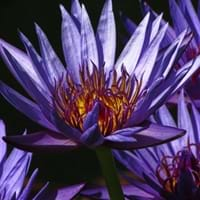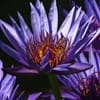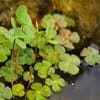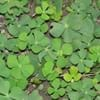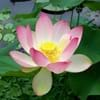Life Span
Perennial
Perennial
Type
Herbs
Flowering Plants, Shrubs
Origin
Eastern Africa
Eastern Asia
Types
Not Available
Not Available
Habitat
Lowland, Ponds
Barren waste areas, disturbed sites, Fields, Forests, Wet lands
USDA Hardiness Zone
10-11
4-11
AHS Heat Zone
Not Available
Not Available
Sunset Zone
Not Available
Not Available
Habit
Oval or Rounded
Cushion/Mound-forming
Flower Color
Blue, Dark Blue, Yellow, Yellow green
White, Yellow
Flower Color Modifier
Bicolor
Bicolor
Fruit Color
Light Green
Black
Leaf Color in Spring
Dark Green, Green
Green
Leaf Color in Summer
Dark Green
Green
Leaf Color in Fall
Green, Orange, Yellow
Green
Leaf Color in Winter
Green
Green
Leaf Shape
Broadly Ovate
Oval
Plant Season
Spring, Summer, Fall, Winter
Summer
Sunlight
Full Sun, Partial Sun
Full Sun, Partial shade
Type of Soil
Clay, Loam
Well drained
The pH of Soil
Acidic, Neutral, Alkaline
Neutral
Soil Drainage
Average
Well drained
Bloom Time
Early Spring
Late Winter, Spring, Summer
Tolerances
Pollution, Drought, Soil Compaction
Drought
Where to Plant?
In Water, Pot
Ground
How to Plant?
Corms or bulbs, From Rhizomes, Seedlings
Layering, Seedlings, Stem Cutting
Plant Maintenance
Medium
Medium
Watering Requirements
Plant grows in water
Get enough water whenever the soil is dry
In Summer
Lots of watering
Lots of watering
In Spring
Moderate
Moderate
In Winter
Average Water
Average Water
Soil pH
Acidic, Neutral, Alkaline
Neutral
Soil Type
Clay, Loam
Well drained
Soil Drainage Capacity
Average
Well drained
Sun Exposure
Full Sun, Partial Sun
Full Sun
Pruning
Remove damaged leaves, Remove dead branches, Remove dead leaves
Remove dead or diseased plant parts
Fertilizers
All-Purpose Liquid Fertilizer
All-Purpose Liquid Fertilizer, General garden fertilizer
Pests and Diseases
Lily Beetle, Red blotch, Sap-Sucking Insects
Not Available
Plant Tolerance
Drought
Drought
Flower Petal Number
Single
Single
Foliage Texture
Not Available
Not Available
Foliage Sheen
Glossy
Not Available
Attracts
Aphids, White bugs
Bees, Birds, Butterflies
Allergy
Diabetes, Nausea
poisonous if ingested, Skin irritation
Aesthetic Uses
Beautification, Hanging Basket, Showy Purposes
Showy Purposes
Beauty Benefits
Not Available
Not Available
Environmental Uses
Air purification
Air purification, Food for birds
Medicinal Uses
Anxiety, Combats Stress, Diarrhea, Improve circulation, increase memory, Soothing and relieving pain
Fever, Sore throat, Stomach aliments
Part of Plant Used
Leaves, Root, Stem
Flowers, Leaves
Other Uses
Oil is used in perfume, soaps, creams, etc., Traditional medicine, Used as Ornamental plant, Used for its medicinal properties
Making Perfumes, Used as Ornamental plant, Used for its medicinal properties
Used As Indoor Plant
Yes
No
Used As Outdoor Plant
Yes
Yes
Garden Design
Bog Garden, Water Gardens
Container, Cutflower, Dried Flower/Everlasting, Groundcover, Mixed Border, Rock Garden / Wall
Botanical Name
Nymphaea caerulea
Lonicera japonica
Common Name
Blue Lotus, Blue Egyptian lotus
Japanese Honeysuckle, suikazura, jinyinhua
In Hindi
ब्लू लोटस
जापानी Honeysuckle
In German
Blue Lotus
Japanese Honeysuckle
In French
Blue Lotus
Chèvrefeuille japonais
In Spanish
Blue Lotus
madreselva japonesa
In Greek
Blue Lotus
Το ιαπωνικό αγιόκλημα
In Portuguese
Blue Lotus
Honeysuckle japonês
In Polish
Blue Lotus
wiciokrzew japoński
In Latin
Blue Lotus
CISSANTHEMOS Italica
Phylum
Magnoliophyta
Magnoliophyta
Class
Magnoliopsida
Magnoliopsida
Order
Nymphaeales
Dipsacales
Family
Nymphaeaceae
Caprifoliaceae
Clade
Angiosperms
Angiosperms, Asterids, Eudicots
Tribe
Not Available
Not Available
Subfamily
Not Available
Not Available
Number of Species
Not Available
Season and Care of Blue Lotus and Japanese Honeysuckle
Season and care of Blue Lotus and Japanese Honeysuckle is important to know. While considering everything about Blue Lotus and Japanese Honeysuckle Care, growing season is an essential factor. Blue Lotus season is Spring, Summer, Fall and Winter and Japanese Honeysuckle season is Spring, Summer, Fall and Winter. The type of soil for Blue Lotus is Clay, Loam and for Japanese Honeysuckle is Well drained while the PH of soil for Blue Lotus is Acidic, Neutral, Alkaline and for Japanese Honeysuckle is Neutral.
Blue Lotus and Japanese Honeysuckle Physical Information
Blue Lotus and Japanese Honeysuckle physical information is very important for comparison. Blue Lotus height is 80.00 cm and width 40.00 cm whereas Japanese Honeysuckle height is 800.00 cm and width 800.00 cm. The color specification of Blue Lotus and Japanese Honeysuckle are as follows:
Blue Lotus flower color: Blue, Dark Blue, Yellow and Yellow green
Blue Lotus leaf color: Dark Green and Green
Japanese Honeysuckle flower color: White and Yellow
- Japanese Honeysuckle leaf color: Green
Care of Blue Lotus and Japanese Honeysuckle
Care of Blue Lotus and Japanese Honeysuckle include pruning, fertilizers, watering etc. Blue Lotus pruning is done Remove damaged leaves, Remove dead branches and Remove dead leaves and Japanese Honeysuckle pruning is done Remove dead or diseased plant parts. In summer Blue Lotus needs Lots of watering and in winter, it needs Average Water. Whereas, in summer Japanese Honeysuckle needs Lots of watering and in winter, it needs Average Water.
